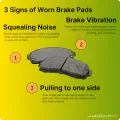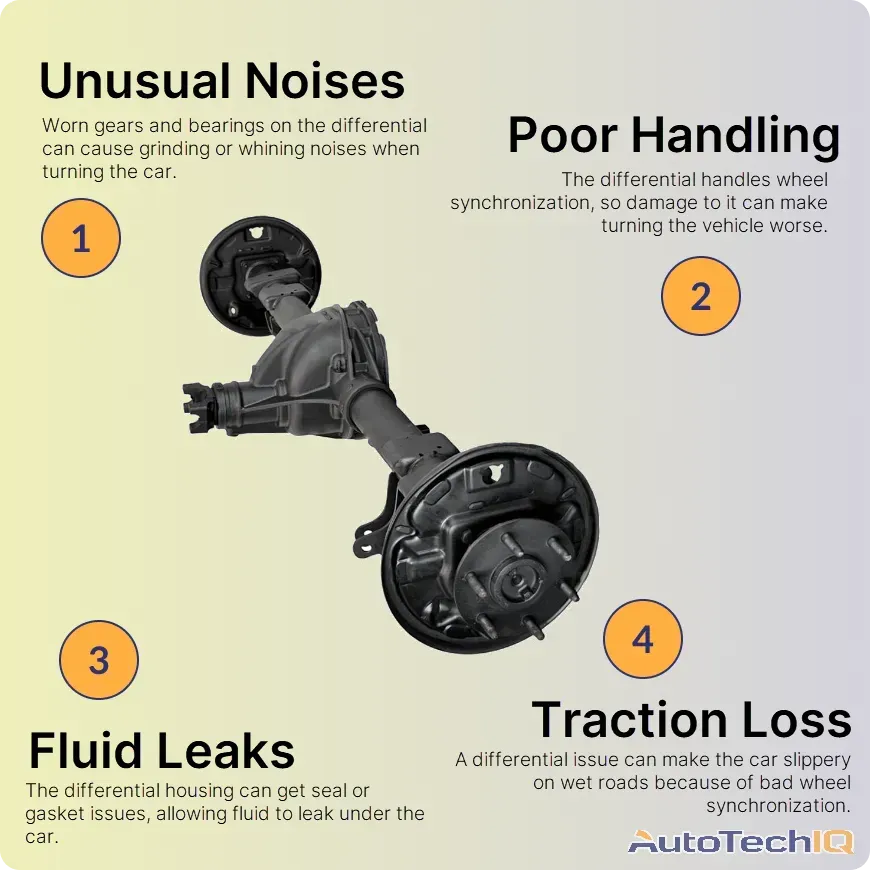
The rear differential is a car part that distributes power to the wheels, making them rotate. The catch about the rear differential is that it spins one wheel differently than the other. For example, during a turn, the left and right rear wheels rotate at different speeds. This rotation difference between wheels improves stability, making the turn easier to handle. The entire process happens with the help of the transmission system, including various gears and bearings.
In short, the rear differential is awesome for your vehicle's steering, even avoiding tire wear issues and vehicle bumpiness.

How much does it cost to replace a rear differential?
It depends on the vehicle's make and model, the differential type (open, limited-slip, or locking), labor costs, and if you're opting for aftermarket parts. Generally, rear differential replacement costs sit between a few hundred dollars and over a thousand dollars. Ask a professional technician or repair shop for your vehicle's rough rear differential estimate.
What happens if you don't fix the rear differential?
A damaged rear differential worsens the vehicle's handling, tires, and traction on slippery surfaces. Plus, it can damage other drivetrain components or even cause a complete drivetrain failure. Consequently, the repair costs will increase as you drive the vehicle, and your road safety will be compromised. Also, note that this affects the vehicle's overall longevity and value.

How often should the rear differential be changed?
Most manufacturers and professionals agree that a rear differential inspection around the 30,000 to 50,000 miles mark is good. However, vehicles used for heavy towing, off-roading, or under severe driving conditions may require more frequent checks. This recommended inspection mark ensures safe and efficient vehicle operation and longevity. Read your vehicle's owner's manual or consult a professional technician for specific maintenance guidelines.
How long does it take to fix a rear differential?
It really depends on how big the damage is. However, simple repairs like changing the rear differential fluid or replacing seals may take a few hours. Difficult repairs, like replacing gears or bearings, can take hours to a full day. In extreme cases, it might require multiple days. A professional technician often determines the exact duration based on what he saw in the inspection.
Can a bad differential cause transmission problems?
Yes. The differential is part of the drivetrain that connects the transmission to the wheels. If the differential has worn gears or bearings, it affects the power from the transmission to the wheels. This can quickly become transmission damage since the gears can wear out, crack, or overstress related components. In such cases, you might notice poor shifting and strange noises.
What are rear differential symptoms a driver may notice
Unusual Noises: Drivers may hear grinding, whining, or clunking noises, often when turning or accelerating. These noises suggest potential issues within the differential, such as worn gears or bearings.
Poor Handling: A driver might notice the vehicle feels less stable, especially during turns. This can be due to problems with the differential affecting wheel synchronization.
Vibration: Experiencing excessive vibrations, especially at higher speeds, may indicate differential problems, affecting overall drivetrain balance.
Uneven Tire Wear: Uneven tire wear, where one tire wears out faster than the others, could be a sign of a malfunctioning differential, as it affects proper power distribution to the wheels.
Fluid Leaks: Leaking fluid from the differential housing can point to seal or gasket issues, which need prompt attention to prevent further damage.
Reduced Traction: In adverse conditions, like slippery roads, a loss of traction can result from a failing differential, making the vehicle harder to control.

Look for dashboard warnings if you notice any of these symptoms inside your vehicle. If the dashboard isn't showing any warnings, try identifying steering-related issues. So, if the car is tough to turn or acting weird while doing so, consider scheduling a vehicle inspection.
How a proper rear differential service looks like
Educating car owners about rear differential repair or replacement is vital for reputable auto shops. Some follow a unique approach - inspection images and a guided explanation to clarify this process.
To better illustrate this process, let's create a fictional scenario where a customer gets help from an outstanding repair shop.
Inspect: A car owner, Jane, brought her SUV due to unusual rear-end noises. The technician, Mike, took all relevant information Jane could remember, helping him to pinpoint possible causes. Then, Mike lifted the vehicle on a sturdy lift to access the rear differential. The team documented the differential's condition with a digital camera, photographing the worn gears and bearings. These inspection images are essential for customer education.
Test: With the inspection complete, it was time for testing. Mike and his team wanted to see the rear differential working. They drove the vehicle, noting any vibrations or sounds during the test drive. These tests helped gather crucial data to assess the differential's condition and pinpoint the root cause of the issue.
Evaluate: After inspection and testing, the next step was evaluation. The data collected during the tests, combined with the inspection images, allowed Mike to assess the state of the rear differential. He considered factors like wear patterns, noises, and vibrations while referring to the photos, videos, and notes. This evaluation was essential in determining the extent of the problem and the necessary repairs.
Diagnose: The evaluation led to a conclusive diagnosis. Mike could pinpoint the exact issue within the rear differential with the inspection images and test results. He explained to Jane that the gears and bearings showed excessive wear, causing the unusual noises. This step was critical in ensuring an accurate understanding of the problem.
Confirm Repair: After the diagnosis was shared with Jane, she proceeded with the recommended repair. Mike's team replaced the worn components, showing the new parts to Jane before installation. Following the repair, they re-ran the tests. Using before-and-after photos and videos, Mike showed Jane the improvements and how the repair fixed the initial problems. The visual narrative and step-by-step process allowed for a thorough and educational experience, giving Jane a better understanding of her car's rear differential.
Top 5 Causes of Rear Differential Issues
Worn Gears: Worn differential gears can result in a whining or grinding noise during acceleration or turns, indicating the need for gear replacement.
Damaged Bearings: Failing differential bearings often produce humming or growling noises, especially at certain speeds.

Leaking Seals: Leaking differential seals lead to fluid loss, potentially causing overheating, noise, and reduced lubrication.
Improper Fluid Level: Low or contaminated differential fluid can cause overheating, gear damage, and increased friction, leading to noise and potential damage.
Lack of Maintenance: Neglecting regular differential maintenance can result in various issues, from noisy operation to complete differential failure.

Top 5 Rear Differential Fixes
Gear Replacement: Replace worn or damaged gears within the rear differential to eliminate noise and restore proper power distribution between the wheels.
Bearing Replacement: Replacing worn differential bearings helps eliminate humming or growling noises and ensures smooth operation.
Seal Repair/Replacement: Fixing or replacing leaking seals stops fluid loss, preventing overheating, noise, and differential damage.
Fluid Change: Changing the differential fluid at recommended intervals or when contaminated can enhance lubrication, reduce friction, and maintain proper performance.
Regular Maintenance: Consistent differential maintenance, including inspections and fluid changes, prevents issues and ensures the rear differential's longevity and smooth operation.
Summary
This article explains rear differentials' role in modern vehicles. It goes around cost factors about rear differential replacement or repair; it also explains the consequences of not addressing issues promptly and the necessity of timely maintenance. Additionally, it shows how auto repair shops educate car owners using visual inspections and a step-by-step process. Finally, the article lists common symptoms and their potential causes, followed by the top fixes to address rear differential issues.
There's a shop nearby that wants to provide you the transparent services you read here
Do you value high-quality inspection images that help you understand your vehicle's condition better? Visit our "Shop Near You" page to discover reputable auto repair shops nearby. These shops employ experienced technicians who can provide you with detailed visual insights into your vehicle's health, just like the inspection images discussed in our informative article. Don't miss out on the opportunity to ensure your vehicle's optimal performance and safety by finding a trusted automotive expert near you!
Other news
-
Car is Squealing When Driving

-
What is Preventative Maintenance and What Are The Benefits of it?

-
JobViewIQ - DVI Process Training - Part of the Auto Care Alliance Benefits

-
7 Signs of Clogged AC Components
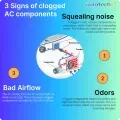
-
How Much Does a Transmission Fluid Change Cost?
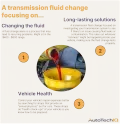
-
7 Signs of a Leaking Axle Seal
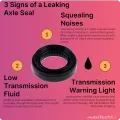
-
8 Signs of a Bad Brake Pad
